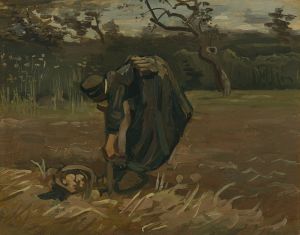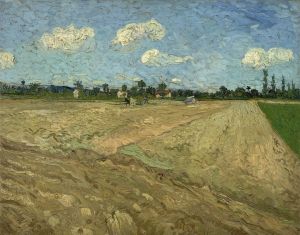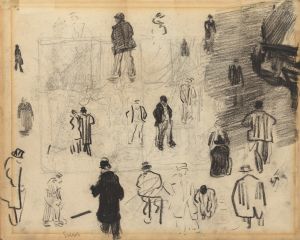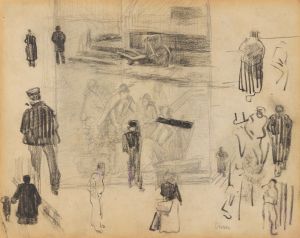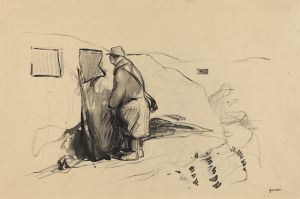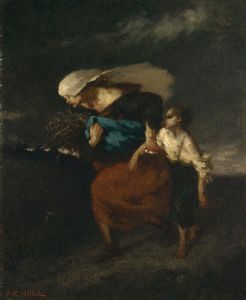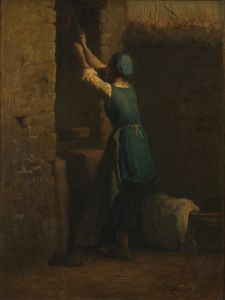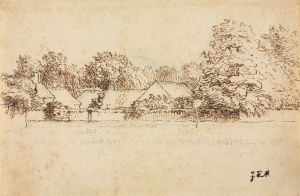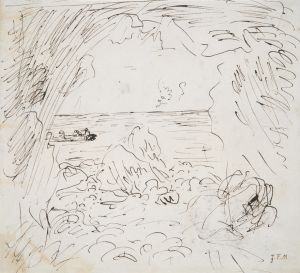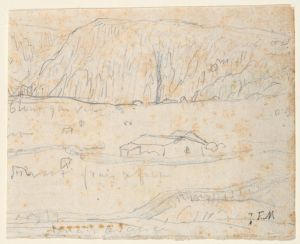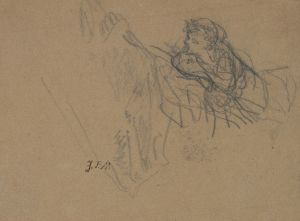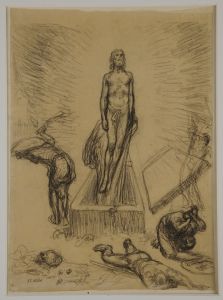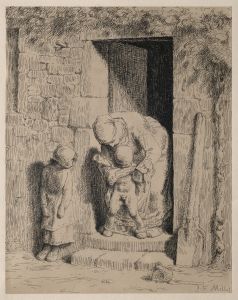
Peasant with a Wheelbarrow
A hand-painted replica of Jean-François Millet’s masterpiece Peasant with a Wheelbarrow, meticulously crafted by professional artists to capture the true essence of the original. Each piece is created with museum-quality canvas and rare mineral pigments, carefully painted by experienced artists with delicate brushstrokes and rich, layered colors to perfectly recreate the texture of the original artwork. Unlike machine-printed reproductions, this hand-painted version brings the painting to life, infused with the artist’s emotions and skill in every stroke. Whether for personal collection or home decoration, it instantly elevates the artistic atmosphere of any space.
"Peasant with a Wheelbarrow" is a painting by the renowned French artist Jean-François Millet, a prominent figure in the Realism art movement of the 19th century. Millet is best known for his depictions of rural life and the everyday struggles of peasants, which he portrayed with a sense of dignity and respect. His works often reflect the harsh realities of agricultural labor during this period, and "Peasant with a Wheelbarrow" is no exception.
Jean-François Millet was born on October 4, 1814, in Gruchy, a small hamlet in the Normandy region of France. Coming from a family of farmers, Millet was intimately familiar with the rural lifestyle and the challenges faced by peasants. This background deeply influenced his artistic vision and subject matter. After studying art in Cherbourg and Paris, Millet began to focus on rural scenes, which became the hallmark of his career.
"Peasant with a Wheelbarrow" is believed to have been created during the mid-19th century, a time when Millet was fully immersed in his exploration of peasant life. The painting depicts a solitary figure, a peasant, pushing a wheelbarrow through a field. The composition is simple yet powerful, capturing the essence of the laborer's daily toil. Millet's use of muted colors and soft brushwork adds to the somber and contemplative mood of the piece.
Millet's work often highlighted the connection between humans and the land, emphasizing the dignity and resilience of those who worked it. In "Peasant with a Wheelbarrow," the figure is portrayed with a sense of quiet strength, embodying the perseverance required to endure the demands of agricultural labor. This focus on the nobility of rural workers was a departure from the more romanticized or idealized depictions of rural life that were common in earlier art.
The painting is a testament to Millet's commitment to realism and his desire to shed light on the often-overlooked lives of peasants. His work was both praised and criticized during his lifetime; some contemporaries appreciated his honest portrayal of rural life, while others found it too stark or unrefined. Despite this, Millet's influence on the art world was significant, inspiring future generations of artists, including the Impressionists and Post-Impressionists, who admired his ability to capture the essence of everyday life.
Millet's dedication to depicting the realities of peasant life was not just an artistic choice but also a reflection of the social and economic changes occurring in France during the 19th century. The Industrial Revolution and urbanization were transforming the landscape, and Millet's work served as a poignant reminder of the enduring connection between people and the land.
"Peasant with a Wheelbarrow" remains an important piece within Millet's oeuvre, exemplifying his skill in portraying the human condition with empathy and realism. Today, Millet's paintings are celebrated for their historical significance and their ability to convey the timeless themes of labor, resilience, and the human spirit. His work continues to be studied and admired for its contribution to the Realist movement and its impact on the trajectory of modern art.





